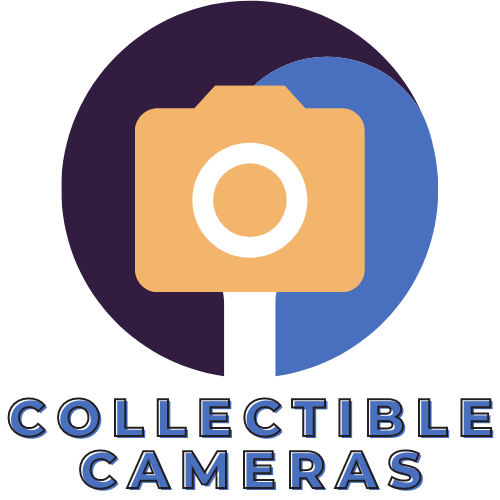Navigating the vast landscape of image processing software can be overwhelming for digital artists. Whether you’re just starting out or looking to enhance your skills, understanding the key features that power these creative tools is essential for producing professional-quality artwork. In today’s digital art ecosystem, mastering the right software features can dramatically improve your workflow efficiency and creative output.
Layer Management Systems
At the foundation of modern image editing lies the layer system, a feature that revolutionized digital art. Businesstic reports show that professional digital artists spend approximately 40% of their workflow time manipulating layers, making this skill critical for efficiency. Layers allow artists to work on different elements independently without affecting the entire composition.
Understanding Layer Hierarchy and Organization
Effective layer management starts with proper organization. Creating logical groupings and naming conventions helps maintain complex projects with dozens or even hundreds of layers. Advanced software like Adobe Photoshop and Affinity Photo offer folder structures and color-coding systems that streamline navigation through complicated compositions.
Mastering Layer Masks and Blending Modes
Layer masks provide non-destructive ways to hide portions of a layer without permanently erasing them. Combined with blending modes such as Multiply, Screen, or Overlay, they create sophisticated visual effects that would be impossible with traditional media. Digital art programs like Procreate and Clip Studio Paint offer intuitive interfaces for applying these techniques, allowing for experimental approaches that preserve original artwork.
Selection Tools and Techniques
The ability to isolate specific areas of an image is fundamental to precise editing. Selection tools range from simple geometric shapes to complex algorithms that detect edges and color ranges.
Precision Selection Methods for Complex Objects
Modern software offers various selection methods including magnetic lasso tools, pen paths, and channel-based selections. For intricate subjects like hair or foliage, machine learning-powered selection tools in programs like Photoshop can save hours of tedious work by automatically detecting object boundaries with remarkable accuracy.
Refining Selections for Seamless Editing
Once a basic selection is made, refinement tools allow artists to perfect edges by adjusting feathering, expanding or contracting boundaries, and smoothing jagged edges. These subtle adjustments make the difference between amateur-looking composites and professional seamless integrations.
Color Correction and Adjustment Tools
Color manipulation is essential for setting mood, creating visual harmony, and ensuring consistency across projects. Digital art software offers comprehensive tools for precise color control.
Working with Color Balance and Levels
Color balance tools adjust the relationship between complementary colors, allowing artists to create warmer or cooler atmospheres. Levels adjustments provide control over image brightness and contrast by manipulating shadow, midtone, and highlight values independently. These fundamental tools form the basis of any color correction workflow.
Mastering Curves for Perfect Tonal Control
The curves tool represents the most powerful color adjustment feature available, offering precise control over every tonal range in an image. By manipulating the curve shape for individual RGB channels, artists can create subtle color shifts, dramatic color grading effects, or correct specific color casts while preserving detail in critical areas.
Retouching and Restoration Features
Digital retouching tools have transformed both commercial and fine art workflows, enabling everything from subtle enhancements to complete restoration of damaged images.

Healing and Clone Tools for Image Cleanup
Spot healing brushes, content-aware fill, and clone stamp tools allow artists to remove unwanted elements or imperfections while maintaining natural textures. These technologies have become increasingly sophisticated, with AI-assisted features that can intelligently replace removed elements with contextually appropriate content.
Detail Enhancement and Preservation Methods
Sharpening filters, clarity adjustments, and texture controls allow artists to enhance important details while maintaining a natural appearance. When working with portrait retouching, frequency separation techniques enable skin smoothing while preserving texture details, creating polished results that avoid the artificial plastic look of over-processed images.
Filters and Effects Libraries
Digital filters provide instant creative transformations that would require extensive traditional techniques to achieve. From subtle enhancements to dramatic stylistic changes, filters expand artistic possibilities.
Creative Applications of Built-in Filters
Standard filter libraries include blur effects, distortions, noise generation, and stylistic transformations like oil painting or watercolor simulations. By combining multiple filters with varying opacities and masks, artists can create unique effects that define their personal style.
Custom Filter Creation and Saving Presets
Advanced users can create their own filters by recording action sequences or developing custom code. Saving frequently used adjustments as presets allows for consistent application across multiple projects, saving time and ensuring visual coherence in series of related artworks.
Brush Systems and Customization
Digital brushes have evolved far beyond simple pixel painting tools to sophisticated systems that can mimic traditional media with remarkable accuracy.
Brush Creation and Parameter Control
Modern art software allows extensive brush customization, including shape dynamics, texture mapping, and scatter effects. Programs like Corel Painter specialize in emulating traditional media through brush physics that simulate how real paint, charcoal, or watercolor interacts with canvas or paper.
Pressure Sensitivity and Dynamic Brush Properties
When paired with pressure-sensitive tablets or styluses, digital brushes respond to hand pressure, tilt, and rotation, mimicking the nuanced control of traditional tools. This capability bridges the gap between digital and traditional art, allowing for expressive mark-making with natural variations in line weight and opacity.
Transform and Perspective Tools
Digital manipulation of form and perspective offers creative freedom impossible in traditional media, enabling impossible geometries and surreal transformations.
Warping and Liquify Techniques
Mesh warping and liquify tools allow artists to push, pull, twist and stretch images as if they were made of clay. These tools are invaluable for character design, concept art, and photo manipulation, enabling dramatic form changes while maintaining visual credibility.
Perspective Correction and 3D Transformations
Perspective tools correct distortion in architectural or product photography or deliberately manipulate perspective for creative effect. More advanced 3D capabilities allow 2D images to be mapped onto three-dimensional objects or create the illusion of depth through perspective transformations.
Text and Typography Integration
The seamless integration of text with imagery is essential for design work, from simple signature elements to complex typographic compositions.
Text Styling and Effects for Digital Art
Beyond basic font selection, digital art software offers extensive text styling options including gradient fills, texture mapping, and 3D extrusions. These effects can transform typography into a central artistic element rather than merely informational content.
Typography Layout and Spacing Control
Professional typography control includes kerning, tracking, and leading adjustments that fine-tune the spacing between letters, words, and lines. Advanced text warping allows type to follow curved paths or conform to shapes, integrating seamlessly with other visual elements.
Export and Format Options
The ability to prepare artwork for different media and platforms is crucial for professional digital artists who must deliver work in various formats.
Optimizing File Types for Different Uses
Understanding when to use lossless formats like PNG or TIFF versus compressed formats like JPEG is essential knowledge. Color profile management ensures accurate reproduction across different devices and print processes, maintaining the artist’s intended color values.
Batch Processing and Automation Workflows
For projects requiring multiple output versions or processing many files, automation tools save countless hours. Actions, scripts, and batch processing allow repetitive tasks to be applied to entire folders of images, maintaining consistent quality while freeing the artist for creative work.
Non-Destructive Editing Techniques
Perhaps the most important advancement in digital art workflows is non-destructive editing, which preserves original image data throughout the creative process.
Smart Object Implementation
Smart Objects encapsulate original image data in a protected format that can be transformed, filtered, or adjusted without permanent changes. This allows for unlimited experimentation while maintaining the ability to return to the original state or adjust previous edits at any point in the workflow.
Adjustment Layers and History States Management
Adjustment layers apply color and tonal changes without altering pixel data, allowing for ongoing refinement throughout the project. History states tracking provides a timeline of edits that can be revisited or branched, creating alternative versions without duplicating large files. This approach supports creative exploration while maintaining professional file management practices.
